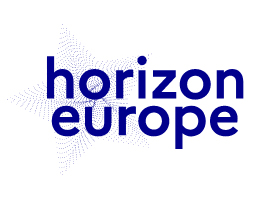
SEMACRET
Date de début : 06/01/2022
Date de fin : 05/31/2025
Numéro de contrat
HORIZON-CL4-2021-RESILIENCE-01-06 SEMACRET
Durée de projet
3 years
Financement
Horizon Europe (HEU)
Montant
322 k€ (CNRS)
Coordinateur : Shenghong Yang (UOULU)
Partenaires : OULUN YLIOPISTO (UOULU), CARDIFF UNIVERSITY (CU), FCIENCIAS.ID – (FC.ID), FACULDADE DE CIENCIAS DA UNIVERSIDADE DE LISBOA (FSCI), CESKA GEOLOGICKA SLUZBA (CGS), CENTRE NATIONAL DE LA RECHERCHE SCIENTIFIQUE CNRS (CNRS), TECHNISCHE UNIVERSITAET WIEN (TU WIEN), HELMHOLTZ-ZENTRUM DRESDEN-ROSSENDORF EV (HZDR), SUPRACON Aktiengesellschaft (SUPRA), AARHUS GEOPHYSICS APS (AARHUS), ITA-SUOMEN YLIOPISTO (UEF), UNIVERSITA DEGLI STUDI DI MILANO (UML), NEW RESOLUTION GEOPHYSICS EUROPA SOCIEDAD LIMITADA (NRG), IMPERIAL COLLEGE OF SCIENCE TECHNOLOGY AND MEDICINE (IMPERIAL), UNIVERSITY OF THE FREE STATE (UFS), MAGNUS MINERALS OY (MM).
Critical raw materials (CRMs) are fundamental to the EU industrial value chains and strategic sectors,
particularly with regard to the green energy transition. Currently, the domestic supply of primary CRMs is below 3% for many important commodities. To obtain an improved understanding of the EU’s critical raw materials potential, discover new ore deposits and thereby increase the internal sourcing of CRMs, and secure its raw materials autonomy, the EU aims to boost the exploration and production of CRMs. The European Commission published a list of 30 CRMs in 2020, many of which are being hosted in orthomagmatic sulfide and oxide ore deposits. Platinum-group metals (PGM) are essential components in fuel cells. Cobalt (Co) and nickel (Ni) are important battery components, and vanadium (V) is used in electricity storage facilities. The use of copper (Cu) in electric vehicles is 4 times higher than in gasoline-powered vehicles. These metals are thus fundamental for the transition to the green economy, yet their future demand will exceed the current supply by more than 100% within a decade (European Commission, 2020). Taking into account current resources, the exploration and mining of these “Green Transition Raw Materials (GTRM)” must be significantly expanded. Orthomagmatic mineral systems also host titanium (Ti) which is listed as a CRM used in aeronautics, and chromium (Cr) which is essential in the steel industry. In the EU, there is currently only one orthomagmatic sulfide deposit (Kevitsa Ni-Cu-PGE-Co, Finland) and one orthomagmatic oxide deposit (Kemi Cr, Finland) in production. Similar, yet currently uneconomic ore deposits have also been identified in other EU countries, such as Portugal, Spain, the Czech Republic, Denmark, and EU associated countries, such as Norway. Currently, the exploration industry mainly uses drilling of geophysical and, to a lesser degree, geochemical anomalies to identify and delineate ore deposits. This method results in significant environmental impact and thus high exploration cost. To reduce the amount of drilling the efficiency of the method needs to be maximised while improving the discovery rate. One way to achieve this is to improve the understanding of ore formation. A major advance in understanding ore deposits has been made with the application of the Minerals Systems Approach. Different from traditional exploration, this acknowledges that the formation of ore deposits is dependent on the interplay of several critical geological components, namely the presence of a metal source, a fluid pathway and a metal sink. If an area lacks one of these components, an ore deposit cannot form. In theory, this allows distinguishing prospective from nonprospective areas, making targeting more efficient. However, there remains controversy about the specific nature of the source, pathway and sink components. In addition, it has proven challenging to translate the three components to exploration criteria that can guide explorers at both the regional scale (so-called greenfield exploration) and the local deposit scale (so-called brownfield exploration).
There are several additional challenges for the exploration industry and governmental decision-makers in the EU: The social awareness of the significance of raw materials and their sustainable sourcing in the EU is relatively low and heterogeneous, which hampers the implementation of efficient exploration. Also, the amount of information on mineral resources and mineral potential in the EU is limited, and the currently reported resources are following different standards, making it difficult to integrate the data. The overarching goal of this project is to provide a clearer understanding of the EU’s mineral potential,
and to develop sustainable (i.e. environmentally and socially friendly) exploration techniques for green transition (critical) raw materials hosted in orthomagmatic ore deposits, thereby bridging this gap between academic research and the mineral exploration industry.


